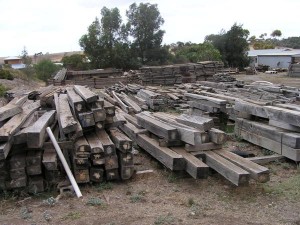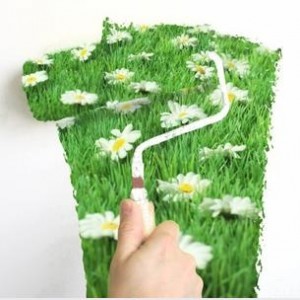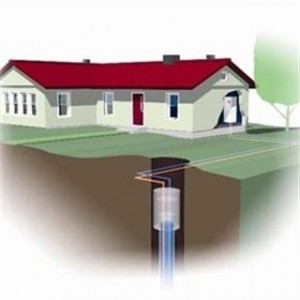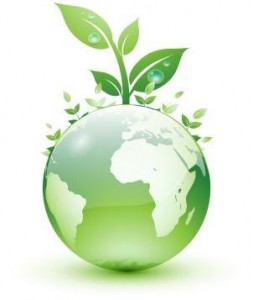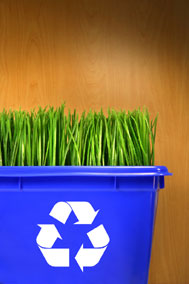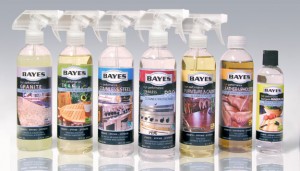
With so many products claiming their green goodness in eloquent, fluffy
language it can be quite a job for consumers to cut through the spin to
determine if a product lives up to its eco-claims. Even figuring out
what’s in “normal” products and their effect on the environment can be
quite a challenge, and “nature identical” labelling; but that was related to food items.
In this article we’ll take a look at how you can track down further
information on a variety of other goods we use regularly such as
cosmetics, hair care products, cleaning materials and more.
Step 1: Identifying greenwashing
Put simply, don’t believe the hype. Go beyond the marketing message and ask questions. Here’s an example.
Recently, a PR company approached me wanting me to write an item on well known mainstream brand’s range of “green” laundry detergents. PR company + well known mainstream brand = immediate suspicion That might sound a little paranoid and prejudiced, but big brands have a lot of marketing dollars. They can spend a fortune on developing
messages that maximise the positives and minimize the environmental negatives of their products. This is a science as much as it is an art as it works on exploiting chinks in our psychological armour.
Still, I asked for more information as clothes washing is an area of consumption that contributes a great deal to our
environmental impact – and if there’s products out there to lessen it, I love to know about them.
I specifically asked the company for an ingredients list. What came back was incredibly vague and mentioned (in glowing terms) only a couple of components of the product that were of course quite environmentally friendly. It’s what was left out that I suspect would reveal the true nature of the product to be not as green as they tout.
Further research confirmed that. A conscious attempt to portray a product as being more environmentally
friendly than it actually is, is called greenwashing – and the practice comes in all sorts of forms with the goal of distracting the consumer from delving too deeply. You can learn more about the tricks and traps in my article on
avoiding greenwashing.
My thoughts are if you contact a company wanting to know about ingredients and components in relation to environmental impact and they are vague about it; don’t waste your time any further, take it as meaning there’s something being hidden – and don’t be fooled by “I’m sorry, that’s a trade secret” spiel. While approaching companies directly is a good method, you can bypass the potential spin by using the web.
Household products
One of the best resources I’ve come across for tracking down information on thousands of products used around the home is the Household Products Database of the National Library of Medicine. This database contains information
on over 8,000 consumer brands and is very user friendly. Categories include:
Auto
Products
Cleaning and related
Pesticides
Yard and garden
Personal Care
Home Maintenance
Arts Crafts
Pet Care
Home Office
Or you can search by product names, types of products, manufacturers
or ingredients
While the results are more focused on human health and toxicity, you can drill down by clicking links on the various chemicals listed to get more information. Alternatively, you can just copy the chemical name and run a query on a search engine such as Google like so:
“Sodium lauryl sulfate” environment
By the way, Sodium lauryl sulfate is commonly found in products that lather, such as in shampoo, toothpaste and detergents. It doesn’t break down easily and it toxic to aquatic creatures.
Cosmetics and hair care
Along with the Household Products Database, I’ve often referred to the cosmetic database Skin Deep when researching information for articles relating to cosmetics and hair care products. Skin deep is is a safety guide run by the Environmental Working Group. It pairs ingredients in more than 42,000 products against 50 definitive toxicity and regulatory database.
You can enter a brand name or an ingredient and receive results along with hazard scores, both for the product overall and for it’s individual components. The hazard rating of a product can be higher than for its individual ingredients — it adds up the hazards of all ingredients. The hazard score is on 0-10 scale, with 10 being the worst possible rating.
As with the Household products database, you can click on particular compounds to learn more or perform a search such as suggested above.
Pesticides and herbicides
Pesticides and herbicides are by their very nature not environmentally friendly – otherwise they wouldn’t work. However there are degrees of toxicity, particularly in relation to non-target species. You can learn more about the chemicals in various brands using the Crop Data Management Systems database which contains information on herbicides and pesticides from over 100 manufacturers.
MSDS
Both the Skin Deep and Household Products database are very US-centric. That’s not a major problem as so many of the brands we use in other countries contain the same ingredients as the corresponding brand in the USA. From time to time though, there will be ingredients banned in other countries that aren’t in the USA and vice versa; so a
brand may have different formulas for the same products in different countries.
One way to get local information is to directly consult a global MSDS database; which the above services also draw on.
MSDS stands for Material Safety Data Sheet. An MSDS contains information regarding the properties of a product such as toxicity, health effects and spill handling procedures. They can be somewhat vague on environmental effects, but again, you’ll be able to get a listing of chemicals contained in a product to research further by running a search on your favorite search engine using the chemical name along with the word “environment”.
A great MSDS search engine can be found at MSDS.com. Just enter the product name and listings for that product’s components in various countries will be displayed.
Keep things in perspective
When I first started really getting into researching products I was shocked at how just about everything was “bad”. I arrived at the conclusion I should be naked, live out in the open and only eat rocks. That of course is a little unrealistic.
Rocks really don’t taste all that good as well as being incredibly hard to digest. Being naked in winter presents some problems too. Just about everything we consume has some sort of negative environmental impact these days – whether it’s the ingredients themselves, how the ingredients were sourced, the packaging, the transport to get it to us
and so on. It’s sometimes just a matter of choosing the lesser of the evils so to speak; finding products with minimal impact.
For example, lets say a product you use a lot of contains a substance that’s particularly environmentally unfriendly and there doesn’t seem to be any alternatives. In that situation, sometimes the best thing you can do is to find a brand of that product that contains less of the nasty substance if it can still achieve the same outcome until such time that greener alternatives appear on the market.
Another scenario – Brand X has a chemical that’s environmentally toxic and Brand Y has a different chemical that is also very un-green – the question you should ask yourself is which of the two is less damaging. Yet another example: Product X and Product Y have exactly the same ingredients, but X is sold in packaging that can be recycled and Y isn’t – so go for X. Thankfully, having to make these sorts of tough decisions is slowly becoming less of an issue as there are
more green alternatives for so much of what we now. While the process of sorting out the green from the garbage can be a little exhausting at first, over time you’ll be able to more easily recognize issues such as green washing and to have a general idea of the impact of X chemical is without having to run to the nearest Internet connection.
Something else to bear in mind – as with everything related to living a greener life, it’s not just the product choices we make, but how much we use of them. Think lean when going green – it not only helps conserve the environment, but also your bank balance.

